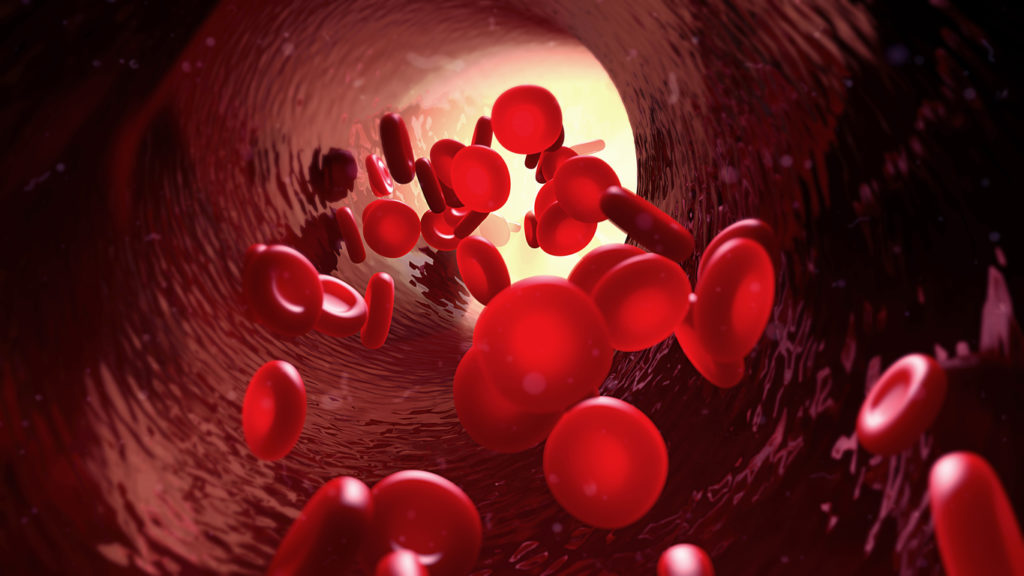RATIONALE: Tipifarnib may stop the growth of tumor cells by blocking the enzymes necessary for tumor cell growth.
PURPOSE: Phase II trial to study the effectiveness of tipifarnib in treating patients who have myelofibrosis with myeloidmetaplasia.
Condition:
– chronic idiopathic myelofibrosis
– Polycythemia Vera
– Essential Thrombocythemia
RATIONALE: Tipifarnib may stop the growth of tumor cells by blocking the enzymes necessary for tumor cell growth.PURPOSE: Phase II trial to study the effectiveness of tipifarnib in treating patients who have myelofibrosis with myeloidmetaplasia.Condition:- chronic idiopathic myelofibrosis- Polycythemia Vera- Essential Thrombocythemia Study Type: InterventionalStudy Design: Treatment Official Title: Phase II Study of Tipifarnib in Patients With Myelofibrosis With Myeloid MetaplasiaFurther Study Details: OBJECTIVES:Determine the response rate in patients with myelofibrosis with myeloid metaplasia treated with tipifarnib. Determine the toxicity of this drug in these patients. Determine the effect of this drug on disease-associated anemia, palpable splenomegaly, and hypercatabolic symptoms in these patients. Determine the effect of this drug on the pathologic increase in circulating myeloid progenitors from baseline to after the first course in these patients. Correlate response/relapse in these patients with in vitro myeloid colony sensitivity to this drug. Determine the effect of this drug on bone marrow histologic features (osteosclerosis, reticulin fibrosis, and angiogenesis) in these patients. OUTLINE: This is a multicenter study.Patients receive oral tipifarnib twice daily on days 1-21. Treatment repeats every 28 days for up to 6 courses in the absence of disease progression or unacceptable toxicity. Patients are followed every 3 months until disease progression and then every 6 months for up to 2 years.PROJECTED ACCRUAL: A total of 18-35 patients will be accrued for this study within 15 months. Eligibility Ages Eligible for Study: 18 Years and above, Genders Eligible for Study: Both Criteria DISEASE CHARACTERISTICS:Histologically confirmed myelofibrosis with myeloid metaplasia Agnogenic myeloid metaplasia Post-polycythemic myeloid metaplasia Post-thrombocythemic myeloid metaplasia Bone marrow must show reticulin fibrosis and peripheral blood smear must show leukoerythroblastosis and dacrocytosis Bone marrow must not show evidence of other conditions associated with myelofibrosis, including the following: Metastatic carcinoma Lymphoma Myelodysplasia Hairy cell leukemia Mast cell disease Acute leukemia (including M7 type) Acute myelofibrosis Absence of chromosomal translocation t(9:22) by bone marrow chromosome analysis or peripheral blood or bone marrow fluorescent in situ hybridization (FISH) At least 1 of the following must be present: Anemia evidenced by hemoglobin less than 10 g/dL Palpable hepatosplenomegaly PATIENT CHARACTERISTICS: Age18 and over Performance statusECOG 0-2 Life expectancyNot specified HematopoieticSee Disease Characteristics Absolute neutrophil count at least 750/mm^3 Platelet count at least 100,000/mm^3 HepaticBilirubin no greater than upper limit of normal (ULN) AST no greater than 2.5 times ULN Alkaline phosphatase no greater than 3 times ULN (unless secondary to disease) RenalCreatinine no greater than 1.5 times ULN CardiovascularNo symptomatic congestive heart failure No unstable angina pectoris No cardiac arrhythmia OtherNot pregnant or nursing Negative pregnancy test Fertile patients must use effective contraception No other concurrent uncontrolled illness or comorbid condition that would preclude study participation No ongoing or active infection No psychiatric illness or social situation that would preclude study participation No known quinolone sensitivity PRIOR CONCURRENT THERAPY: Biologic therapyNo concurrent epoetin alfa No concurrent prophylactic colony-stimulating factors (filgrastim [G-CSF] or sargramostim [GM-CSF]) No concurrent thalidomide ChemotherapyMore than 2 weeks since prior cytotoxic chemotherapy Endocrine therapyNot specified RadiotherapyNot specified SurgeryNot specified OtherMore than 2 weeks since prior myelosuppressive agents No other concurrent therapy directed at the disease [1] Ruben A. Mesa, MD, Study Chair, Mayo Clinic Cancer Center
All content and media on the HealthEngine Blog is created and published online for informational purposes only. It is not intended to be a substitute for professional medical advice and should not be relied on as health or personal advice. Always seek the guidance of your doctor or other qualified health professional with any questions you may have regarding your health or a medical condition. Never disregard the advice of a medical professional, or delay in seeking it because of something you have read on this Website. If you think you may have a medical emergency, call your doctor, go to the nearest hospital emergency department, or call the emergency services immediately.







